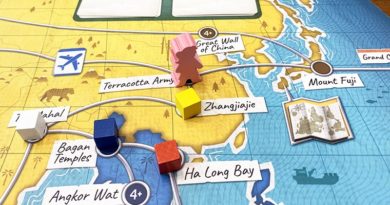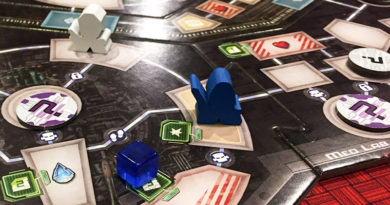Harry Potter maze-shifting fun
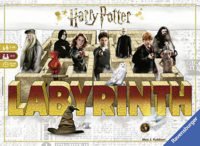
For many years we’ve heard of a great introductory family board game called, Labyrinth. It was first published in 1986 and has spawned a line of Labyrinth games.
So when I had the chance to get a copy in a trade at SaltCon this year, I was happy to end up with a copy of the game for our family.
But then an even better deal came along. Ravensburger sent us a copy of the new iteration of the game — Harry Potter Labyrinth!
Yes, it’s exactly the same game play as the original — but we love Harry Potter, so this is totally the way to go for us. Read on to see if it is for your family too.
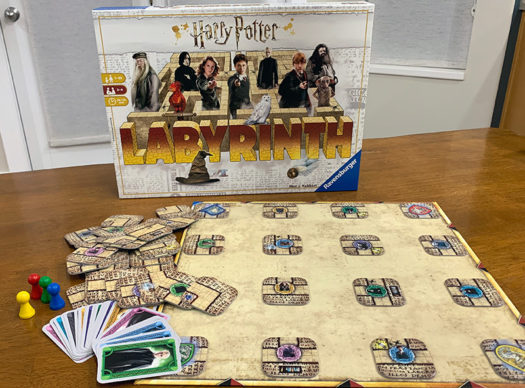
How to play Harry Potter Labyrinth
Harry Potter Labyrinth (and the original) is a super simple game to learn how to play. Yet depending on who you’re playing with, there may be more strategizing involved in the game.
The objective in Harry Potter Labyrinth is to move through the changing maze, find all the Harry Potter characters in your stack, and get back to your starting point.
But to understand the maze, you’ll have to understand the board.
The game board is a 7 x 7 grid of corridor tiles. 16 of those tiles are permanently placed as part of the game board. The rest are shuffled face down at the start of the game and then placed randomly to fill the rest of the board. One corridor tile will remain off the board.
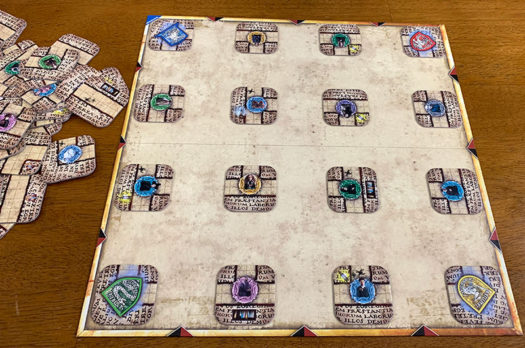
Players choose a colored pawn and place it in the matching corner of the board.
The deck of 24 character cards is shuffled and evenly divided among the players. Players don’t look at their cards. Instead they’re placed in a personal stack face down in front of them.
To begin, players secretly look at the top character card of their deck.
On a player’s turn, they take the single, free corridor tile and choose a moveable row or column to place it in (depicted by arrows on the side of the board). They slide the tile into that row or column and it will shift everything in that line and push a tile off the other side of the board.
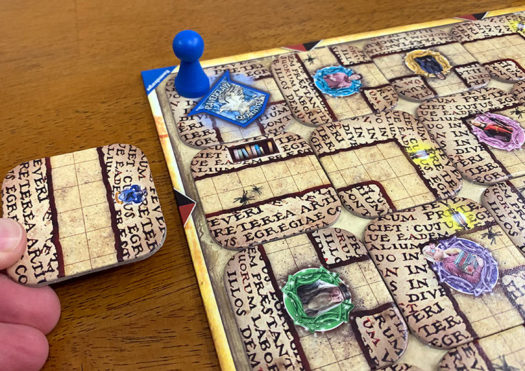
The only restriction is that a player may not place the tile back into the same location it came out of on the prior turn.
Then the player moves their pawn along connected corridors as far as they wish. Once a player reaches the character on their top character card (it may take several turns), they place the card face up in front of them. Then they secretly look at their next character card to know who they want to find next.
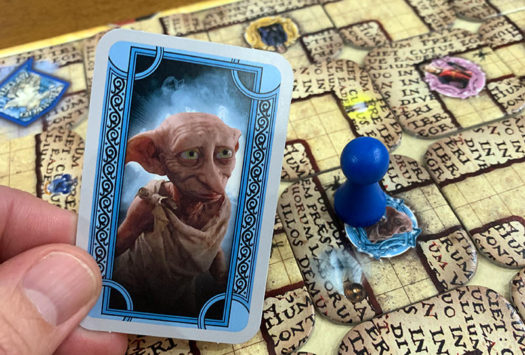
Play continues to the next player.
Once a player has reached all characters on their cards, they must make their way in the same manner back to their starting space.
The first player to find all their characters and make it back to their starting space is the winner.
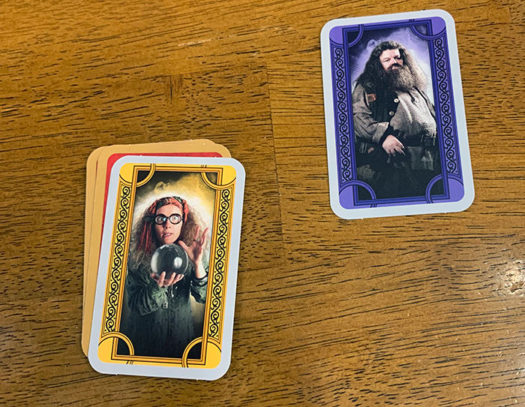
Can the whole family enjoy Harry Potter Labyrinth?
Harry Potter Labyrinth is definitely a game the whole family can enjoy playing together!
As you can tell, it’s a very simple game to understand and play — which makes it approachable by anyone.
Yet, if you’re playing with older players, the game may get a bit more cutthroat (as it does in our family).
The hardest part in our games is getting back to our starting spots!
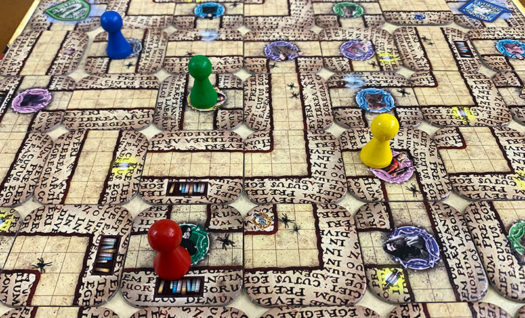
Throughout the game, players are typically just looking for ways to get to their next character. There isn’t a lot of trying to mess up other player’s paths mainly because no one knows where the other players are trying to get to.
But once someone has found all their characters, and it’s very clear where that player wants to get to next, the game steps up a notch with more thoughts towards thwarting that player’s possible routes.
For younger players, it’s a great introductory board game that lets them develop many skills.
First, they’ll love the secret nature of knowing which character they need to find without anyone else knowing. Then they’ll have to figure out how they can connect corridors so they can move their pawn to that character. Then they’ll have to determine where to place a tile so that shifting a whole row or column of tiles will help them connect corridors they way they need.
Those are some great forwarding-thinking skills for them to develop.
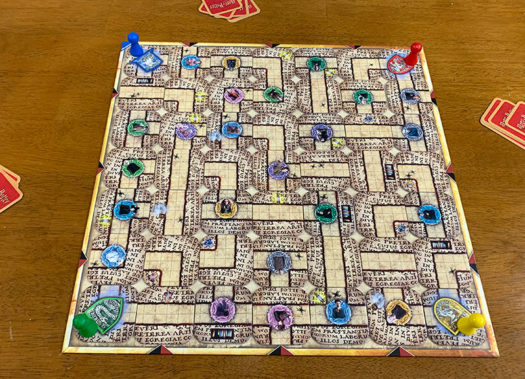
It’s also a good family board game because of the mix of strategy and luck. We’ve already mentioned the strategic nature of shifting tiles. But there’s still a big luck factor in the game.
Inevitably, some players will get lucky with which character they have to find next. When they look at their top card, the next character may be very near by. While other players may have to traverse the whole board to get to theirs.
But since everyone has a bunch of characters to find, that lucky aspect usually balances out. For example, in a 4-player game, each person will need to reach 6 characters.
And the quality of the components in Harry Potter Labyrinth is good for a family game. The corridor tiles are thick and sturdy and the playing pawns are simple. The only nitpick we have is with the cards. They’re on the thin side and they also come in sheets for you to punch out the first time you open the game. But since they’re only used to stack and peak at the top card, they don’t need to be super durable.
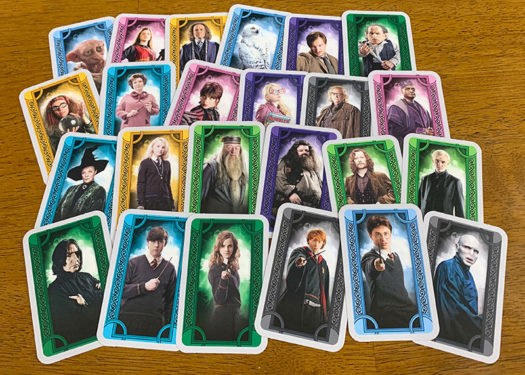
How does Harry Potter Labyrinth score on our “Let’s Play Again” game meter?
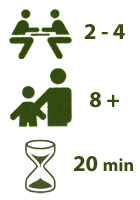 Harry Potter Labyrinth scores well on our “let’s play again” game meter and we know it would score even higher if our kids were younger.
Harry Potter Labyrinth scores well on our “let’s play again” game meter and we know it would score even higher if our kids were younger.
If we were to roll back the clock 10 years, this would be the perfect game for our family. That’s also when they were most into Harry Potter books and movies. We can totally see this game getting plenty of calls to play again for families with kids between 7 and 13.
If that’s your family, then we’d highly recommend Harry Potter Labyrinth!
That being said, even in our family, we’ve played games back to back — because of that next level cutthroat play. And if you really want to bring more of that strategic play (purposefully trying to impact the other players at the same time as moving yourself further ahead), then make one simple change to the game play — have players place their next character card to reach face up!
Then everyone knows where everyone else is trying to get to throughout the game. Game on!
We’d like to thank Ravensburger for a copy of Harry Potter Labyrinth.
Links included are part of the Amazon Affiliate program.



